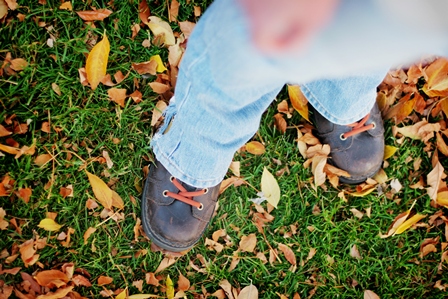Explore fall colors with chemistry
Investigate fall colors with your child through the process of paper chromatography.
 Fall brings many seasonal changes that you and your child can observe together: colorful leaves, shorter days and cooler temperatures. These changes bring opportunities for you to facilitate an investigation with your child as to why these things happen. From this initial questioning, children can then be encouraged to explore the scientific phenomena behind these changes. Lead your child to research and experiment via scientific processes and procedures.
Fall brings many seasonal changes that you and your child can observe together: colorful leaves, shorter days and cooler temperatures. These changes bring opportunities for you to facilitate an investigation with your child as to why these things happen. From this initial questioning, children can then be encouraged to explore the scientific phenomena behind these changes. Lead your child to research and experiment via scientific processes and procedures.
Go on a walk with your child and collect some differently colored leaves. While on the walk, model scientific inquiry by posing the question of what makes the leaves change color? Children will naturally come up with other questions they have. Record these or if each child has a nature journal, have them record their own questions. These questions can be used for future investigations. Children may also have specific answers to why they think the leaves change color; be sure to acknowledge and write all of these possibilities down as well, for it is through the process of questioning and testing their ideas that children will discover science.
Bring the colored leaves back to your home. Use the process of paper chromatography to explore the colors within leaves. Scientists use paper chromatography to separate different substances that may be within a solution. This paper chromatography will use rubbing alcohol to separate out the different pigments that may be in your leaves.
Use three different colored leaves and have your child label three different baby food-sized jars with the leaf sample. Tear up the leaves into small pieces and place them in their labeled jar. Add enough rubbing alcohol to just cover the leaves. Cover each jar and set them in a pan with an inch of hot tap water. Allow the jars to sit in the hot water for 2 hours; replace the hot water as it cools and swirl the jars occasionally. The alcohol allows the color to move out of the leaves. You can now use a ½” strip of coffee filter paper and place one end so it just touches the colored liquid in each jar. The other end of the strip will be outside the top of the jar. The alcohol will evaporate and as it does, it will pull the pigments that were in the leaf up the paper. There will be different pigments that will separate on the paper. The larger pigments will be closer to the liquid on the bottom and the smaller pigments will move to the top. Leave the paper strips in the liquid for 30-90 minutes; remove them and allow them to dry.
Let your child observe the paper chromatography strips. Lead your child to make similar observations on each of the paper strips. What do they see on each? If there is green on the paper and the leaf they put in the jar was yellow, what happened to the green color? If we tried this process on a green leaf, would we see other colors? Begin a discussion and investigation of what pigments are. Ask your child if he/she has heard of chlorophyll? If chlorophyll is the pigment that gives a leaf its green color, what is the pigment that gives a yellow or orange or red color? Investigate this.
Find a picture of a leaf’s anatomy. What does chlorophyll do in a leaf? Why don’t we see the green in leaves during the fall, but we see the other pigments? What is happening? Have them come up with other steps they can take to investigate this more. Will this have the same results if we use different paper? If we use more leaves will we get a darker color?
Assist your child in investigating some of the other questions from the fall walk. For additional science discovery opportunities and information, please visit the MSUE 4-H Science and Technology page.



 Print
Print Email
Email

